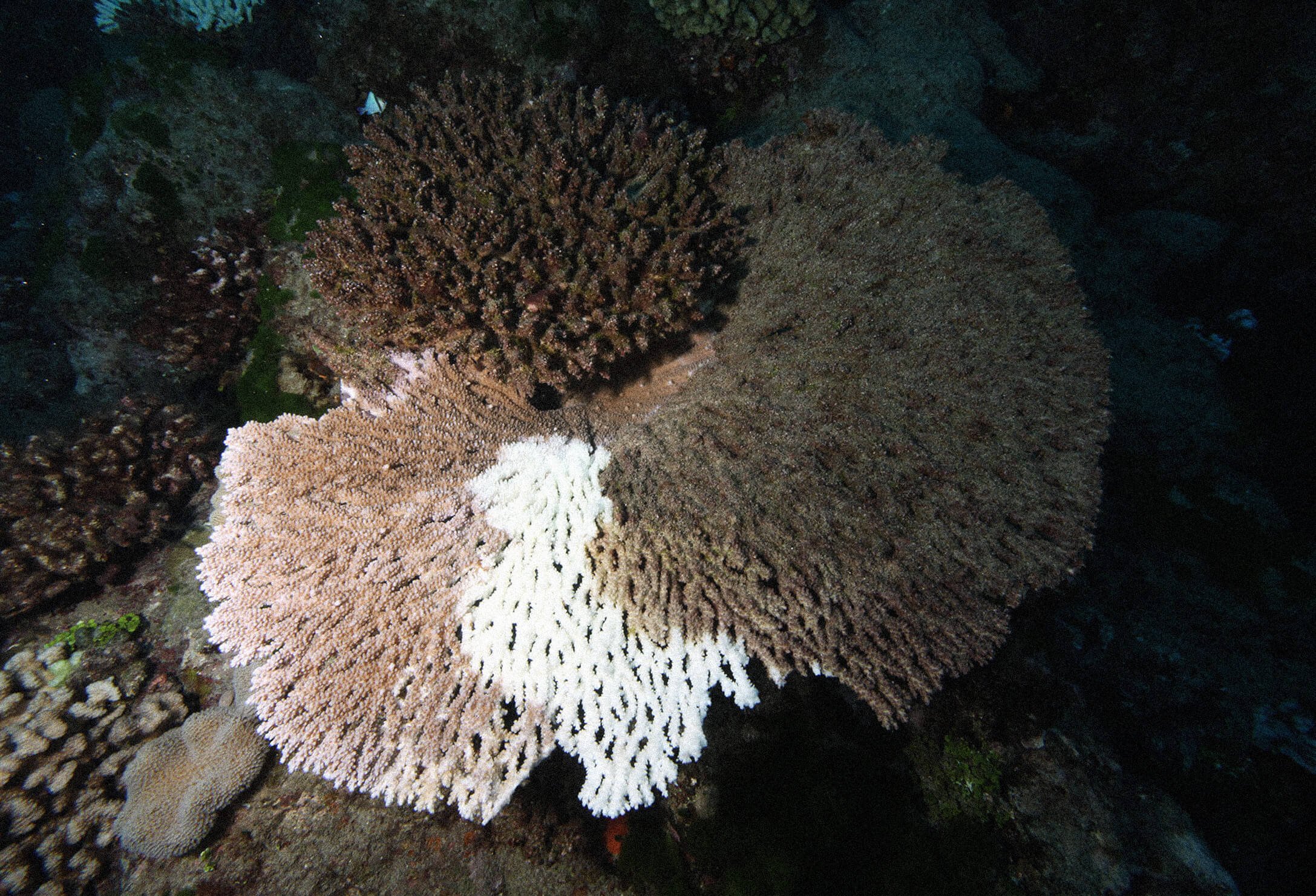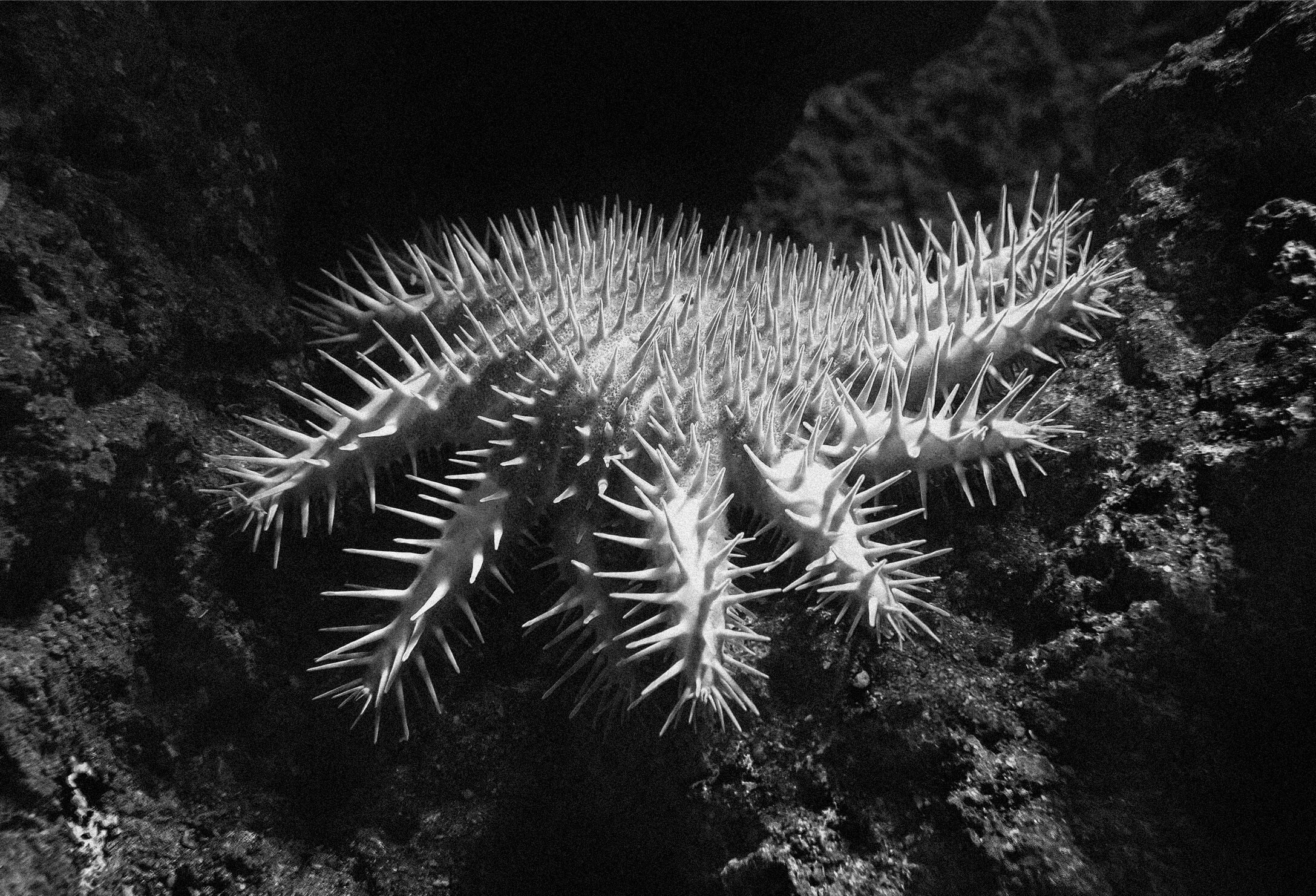SPECIES: CROWN-OF-THORNS STARFISH
JOINING THE DOTS BETWEEN INDUSTRIAL AGRICULTURE AND THE PSYCHEDELIC-LOOKING STARFISH EATING ITS WAY THROUGH THE GREAT BARRIER REEF
At the end of last year, the United Nations released a long-awaited report that didn’t surprise anyone: the Great Barrier Reef is officially in danger. The report found that along with the rising water temperatures which cause coral bleaching and erratic weather patterns such as ocean heatwaves and cyclones, the ability of the world’s largest reef to recover from climate change impacts is now “substantially compromised in particular – but not exclusively – due to degraded water quality.”
The UN report attributed the decline in water quality in the World Heritage Site to marine debris, of which 80 percent is plastic, and the fertilizers and pesticides running off from farms in eastern Australia speeding the growth of algae which suffocate the corals, and in turn provide a bounty of food for infant crown-of-thorns starfish, who as adults, feed on coral. An echinoderm with an incredible biology, crown-of-thorns are huge starfish that can grow up to half a meter in diameter. They’ve got 17 odd arms, and are very, very spiky – hence the name. Here, Dr Anne Hoggett tells us how scientists working at the Lizard Island Research Station discovered that a cow’s stomach acid acts as kryptonite for coral-eating crown-of-thorns starfish.
“We need to do everything we can to give corals a chance to survive and getting rid of crown-of-thorns is an easy win for us.”
WHAT’S THE DEAL WITH THE CROWN-OF-THORNS?
The really important thing to know about crown-of-thorns starfish is that the adults eat living coral. They make a real mess of the reef because they can be almost sitting on top of each other, competing to find new bits of coral to eat. And when they've eaten the coral, they leave behind a dead white skeleton that very quickly gets covered with algae or seaweed, and it looks really horrible.
The second thing to know is that they reproduce at an extraordinary rate – a single female can produce up to a hundred million eggs in a single season. Anything that reproduces so prolifically is built for booms and busts, because any little change in the survivorship of those eggs can lead to an outbreak.
On the Great Barrier Reef, we've seen four outbreaks of crown-of-thorns starfish since the advent of SCUBA diving in the 1960s. I've seen two outbreaks here in my time at Lizard Island, and the reef really does recover quite quickly from a crown-of-thorns outbreak, as there might still be some living polyps that the crown-of-thorns had missed, and they will divide and start to recolonize the original coral skeleton.
Photo by Greg McFall, NOAA Dive Program
WHAT CAUSES THESE OUTBREAKS?
That's the 64-million-dollar question. We still don't really know. The outbreaks tend to start here at the northern end of the Great Barrier Reef – but the fact is that it's the Cairns to Lizard Island area where there are people looking for them. There aren’t many scientists north of Lizard Island to look out for these things. But anyway, they start in the northern end of the Great Barrier Reef and over many years the offspring of those crown-of-thorns starfish move south, because that's the way the currents generally move from here.
Lizard Island generally has very clean waters, but as you move further south down the Barrier Reef, agricultural runoff fertilizes the sea and the baby crown-of-thorns that eat microscopic algae. It's possible these secondary outbreaks further south along the Great Barrier Reef are being exacerbated, perhaps made more chronic rather than episodic, because of human interference. There's a lot of research going on at the moment, and our government is also funding a very expensive program for killing crown-of-thorns starfish, as in the age of climate change, the corals are under so much stress from every which way. It’s not that we see them as a pest or anything; it’s just that we need to do everything we can to give corals a chance to survive and getting rid of crown-of-thorns is an easy win for us.
I READ ON YOUR WEBSITE THAT THE PROCESS TO REMOVE THEM INVOLVES DIVING DOWN AND INJECTING THEM WITH OX BILE. HOW WAS THE CONNECTION BETWEEN A COW’S STOMACH ACID AND ITS EFFECTS ON ECHINODERMS MADE?
It was a serendipitous thing; we had a scientist at the Research Station researching what causes the crown-of-thorns outbreaks to finish. In the course of doing this microbiology, where you have agar plates with nutrients in them, it was found that the agar plate with ox bile as one of its constituents really affected crown-of-thorns. So, they hypothesized that if we injected ox bile into crown-of-thorns starfish they would have a massive allergic reaction. Before that, we used an acid that required multiple injections into a single individual – a big one, oh my God, you'd have to inject it ten times. Now ox bile has been superseded by vinegar, which is a lot simpler and cheaper to use than ox bile, but still involves someone diving down and injecting each individual starfish one by one.






